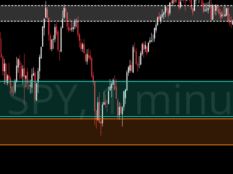MACD 101
I’m Meta Matt, Director of Education and welcome to PB University LITE! This is a 50 Class Trading 101 Series geared towards both new and veteran traders alike! We go over everything from Trading Psychology, Technical Analysis, and Options Trading to Commodity Trading, Forex, and more!! This 50 Class series is not designed be taken in order, it is instead designed for traders to browse and pick which classes interest them. I will include the list of classes at the bottom of this page.
Start Trading With Webull: Free Stock Shares
Custom Trading Indicator DISCOUNT: Try StocksBuddy Today
Get A Trading Coach, Premium Alerts, Education, and Community:
1 Month Membership
90 Days (Save 10% Per Month)
1 Year (Save $279)
The Inner Workings of the MACD
The MACD is comprised of two key elements:
- MACD Line: This line reflects the difference between two exponential moving averages (EMAs) of the price, typically a 12-period EMA and a 26-period EMA.
- Signal Line: This line acts as a filter, smoothing out the MACD line's fluctuations. It's often a 9-period EMA of the MACD line itself.
The MACD also features a histogram that visually portrays the interaction between these two lines.
Decoding the Signals: When the MACD Speaks
The MACD communicates through crossovers and divergences between the MACD line and the signal line:
- Crossovers:
- A bullish crossover occurs when the MACD line rises above the signal line, suggesting a potential shift from a downtrend to an uptrend.
- Conversely, a bearish crossover happens when the MACD line falls below the signal line, indicating a possible trend reversal from bullish to bearish.
- Divergences:
- Bullish divergence: The MACD line forms higher lows while the price creates lower lows, hinting that the downtrend might be losing steam and a bullish reversal could be on the horizon.
- Bearish divergence: The MACD line forms lower highs while the price makes higher highs, suggesting the uptrend might be weakening and a bearish reversal could be in the cards.
- Histogram:
- Rising bars on the histogram signify growing bullish momentum, while falling bars indicate increasing bearish momentum.
Trading with the MACD: Popular Strategies
- Trend Following: MACD crossovers can signal potential trend changes, allowing you to enter or exit positions based on the anticipated trend direction.
- Momentum Trading: Divergences can help identify potential trend reversals, enabling you to initiate positions based on the expected shift.
Remember: While the MACD offers valuable insights, it's crucial to use it alongside other technical indicators for a more comprehensive analysis. Combining the MACD with additional tools (covered in future classes) can strengthen signal confirmation and minimize the risk of misleading signals.

Customizing Your MACD:
The standard MACD settings are usually 12, 26, and 9. However, traders can experiment with different settings to suit their trading style and adapt to market conditions. For example:
- A shorter-term MACD (e.g., 5, 12, 9) might be more responsive to price fluctuations.
- A longer-term MACD (e.g., 20, 50, 18) might provide a smoother view of the trend.
A Note on Limitations:
- Lagging Indicator: The MACD reacts to past price movements, which can lead to false signals in volatile markets.
- Overbought/Oversold: The MACD can generate overbought or oversold signals, but these don't guarantee a price reversal.
The Takeaway: A Powerful Tool, Not a Magic Bullet
The MACD is a valuable asset in your trading arsenal, offering valuable insights into trends, potential reversals, and trading opportunities. However, remember that no single indicator guarantees success. Always use the MACD in conjunction with other indicators and fundamental analysis to make informed trading decisions.

PB University LITE Class List
1) Trading Terminology
2) Stock Market Indices
3) Common, Preferred, and Penny Stocks
4) Diversification of Assets
5) Fundamental Analysis Made Easy
6) Technical Analysis Made Easy
7) Risk Management In The Market
8) Portfolio Management
9) How To Follow Market News
10) Trading Psychology
11) Options Explained
12) The Greeks In Options Trading
13) How To Short Sell Options
14) Covered CALLS
15) Spread Trading
16) Online Brokers for Options Trading
17) Implied Volatility Calculators & Tools
18) Protective PUTS
19) Iron Condors
20) Straddles
21) Reading Level 2
22) Taxes
23) Trading Psychology Techniques
24) The Art Of Trading
25) Becoming A Jedi In The Stock Market
26) Futures Trading Explained
27) Commodity Trading 101
28) Regulatory Environments
29) How To Become A Millionaire
30) $100K In 100 Days
31) Wash Sale Rule
32) Behavioral Finance Part 1
33) Behavioral Finance Part 2
34) 5 Charting Indicators
35) Fair Value Gap
36) Insider Trading and Market Manipulation
37) Stock Chart Types
38) Moving Averages 101
39) Base vs Precious Metals
40) Electricity Trading 101
41) Trading Brokers 101
42) 5 Trading Strategies
43) 85% Trading Rule
44) Are Win Rates A Scam?
45) Futures Trading 101
46) ATR Indicator Strategy With The Greeks
47) MACD Indicator 101
48) Bollinger Bands Indicator 101
49) Wedges, Triangles, Flags and Pennants
50) RSI Divergence 101



